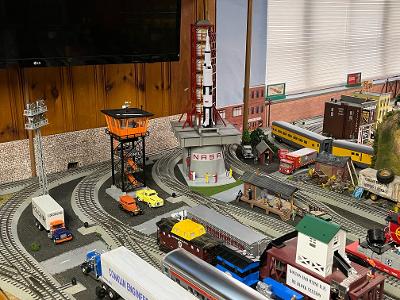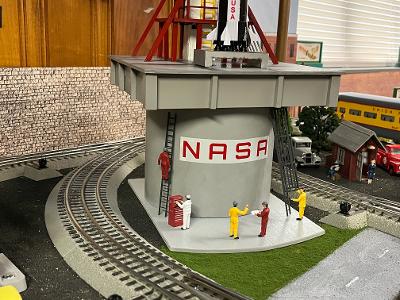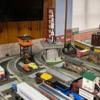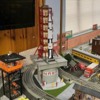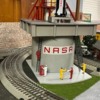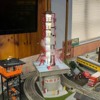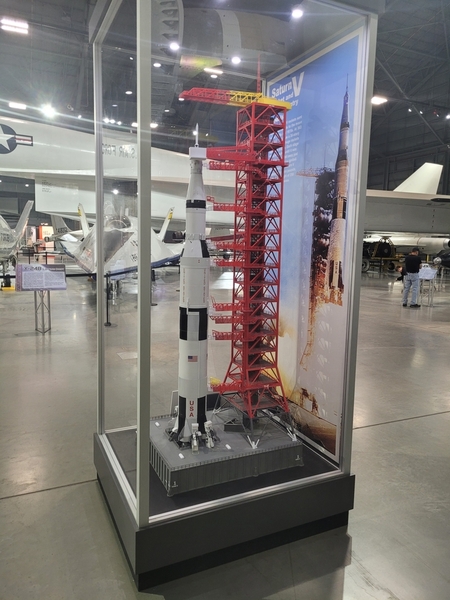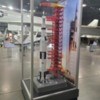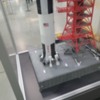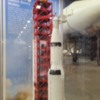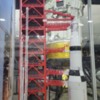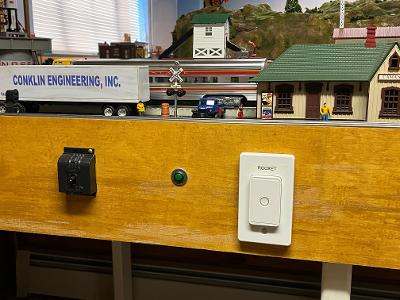I really like the new Menards Rocket Launch Pad, but didn't have any usable space left on my layout to fit it in. I thought I could squeeze the base in between turnouts leading into my staging yard but, although the base would just fit, the overhang of trains entering and exiting the yard would cause them to hit the base. The solution - go up !
I got a small section of 6" diameter green PVC sewer pipe and cut out a 5.25" tall section on my table saw by raising the blade as high as it would go and rotating the pipe as it went through. The cut came out very clean and flat and only required a minimal amount of sanding to make it perfectly flat.
The base was made from a 7" wide extra piece of 1/8" Luan plywood I had used for edging the layout that I cut to length and rounded the front edge to better fit into the space. I figured by raising the launch pad base by 5 3/8" overall, that would be sufficient for any of my trains entering or exiting the yard to pass under the base without danger of striking it and the 6" diameter pipe was small enough to fit in the space without danger of any train's overhang to strike it.
I painted the pipe and base in a grey rattle can color as close a match as I could get to the launch pad's overall color and washed them in an India ink wash to get a slightly weathered look. I made the NASA decal and got some Bachmann's "mechanic" people to populate the base. The ladders are from Plastruct and the green grass is just WS fine turf.
One thing I don't like about the structure is that there's no on/off button and I don't want all the lights flashing and smoke billowing out all the time and it's a pain to plug the wall wart in and out all the time, especially where the wall wart is underneath the layout, so I bought a wireless wall switch and outlet and plugged the wall wart into that. Now, I can just push a button on the edge of the layout and the accessory turns on and off when I want.
I know the scale is off and it isn't very prototypical that a launch pad base would be raised on a platform or that people would be standing underneath a Saturn V launch pad, but it solved a problem and I think came out okay. I believe much of model railroading is like going to the movies - sometimes you just have to engage in the suspension of disbelief.




